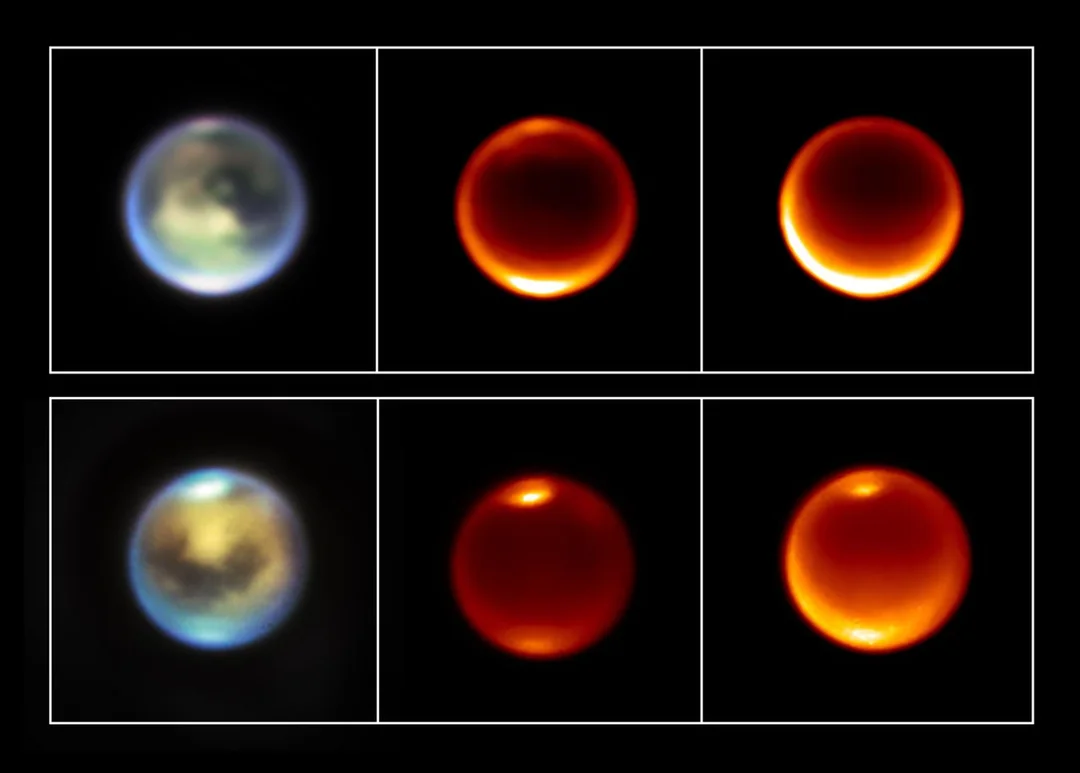
Titan’s Earth-Like Weather: James Webb Telescope Uncovers Methane Clouds and Chemical Reactions on Saturn’s Moon
Saturn's largest moon, Titan, is proving to be an even more intriguing world than previously imagined. Recent observations from the James Webb Space Telescope and the Keck II telescope in Hawaii reveal compelling evidence of Earth-like weather patterns, specifically cloud convection and the presence of key chemical compounds. This discovery has scientists buzzing about the potential for complex organic chemistry on Titan, and what it could tell us about the origins of life itself.
Titan, located approximately 880 million miles from Earth, is shrouded in a dense, smoggy atmosphere, making direct observation challenging. However, the advanced capabilities of the James Webb Space Telescope are piercing through the haze, offering unprecedented insights into Titan's atmospheric dynamics.

Evidence of Cloud Convection: For the first time, scientists have witnessed cloud convection occurring over Titan's Northern Hemisphere, a region dotted with vast lakes and seas composed of liquid methane and ethane. This is a significant finding as it suggests that, similar to Earth's water cycle, methane evaporates from these liquid bodies, rises into the atmosphere, condenses into clouds, and then falls back as rain, replenishing the lakes and seas.
"We were able to see methane clouds evolving and changing close to Titan’s North Pole over multiple days, in the region where large seas and lakes of methane were discovered by the Cassini spacecraft," said NASA research scientist Conor Nixon, lead author of the study published in Nature Astronomy.
Detection of Methyl Radical: The James Webb Space Telescope also detected the presence of the methyl radical (CH3) in Titan's atmosphere. This molecule is highly reactive and short-lived, indicating that active chemical reactions are taking place in Titan’s skies. Interestingly, similar molecules on Earth are associated with the origins of life, adding another layer of intrigue to Titan's potential to harbor organic chemistry processes.

NASA's Dragonfly Mission: These findings underscore the importance of NASA's upcoming Dragonfly mission, scheduled to land on Titan in the 2030s. Dragonfly, a robotic rotorcraft, will explore various locations on Titan, conducting in-depth investigations into its chemistry and geology. This mission will build upon the foundation laid by the James Webb Space Telescope and other observatories, aiming to unlock Titan's biggest secrets.
Implications for Titan's Future: The continuous replenishment of methane in Titan's atmosphere is crucial for maintaining its unique Earth-like weather patterns. If methane is not constantly resupplied, it could eventually be depleted, leading to the loss of Titan's dense atmosphere and transforming it into a "mostly airless world of dust and dunes," as Nixon explained.
The discoveries made by the James Webb Space Telescope represent a significant leap forward in our understanding of Titan. As Stefanie Milam, co-author of the study, aptly put it, "For the first time we can see the chemical cake while it’s rising in the oven, instead of just the starting ingredients of flour and sugar, and then the final, iced cake." These observations are not just about a distant moon; they offer insights into potential pathways for the creation of life and the factors that sustain habitable environments.
What does the future hold for Titan, and what other secrets will Dragonfly uncover? Share your thoughts and predictions in the comments below.